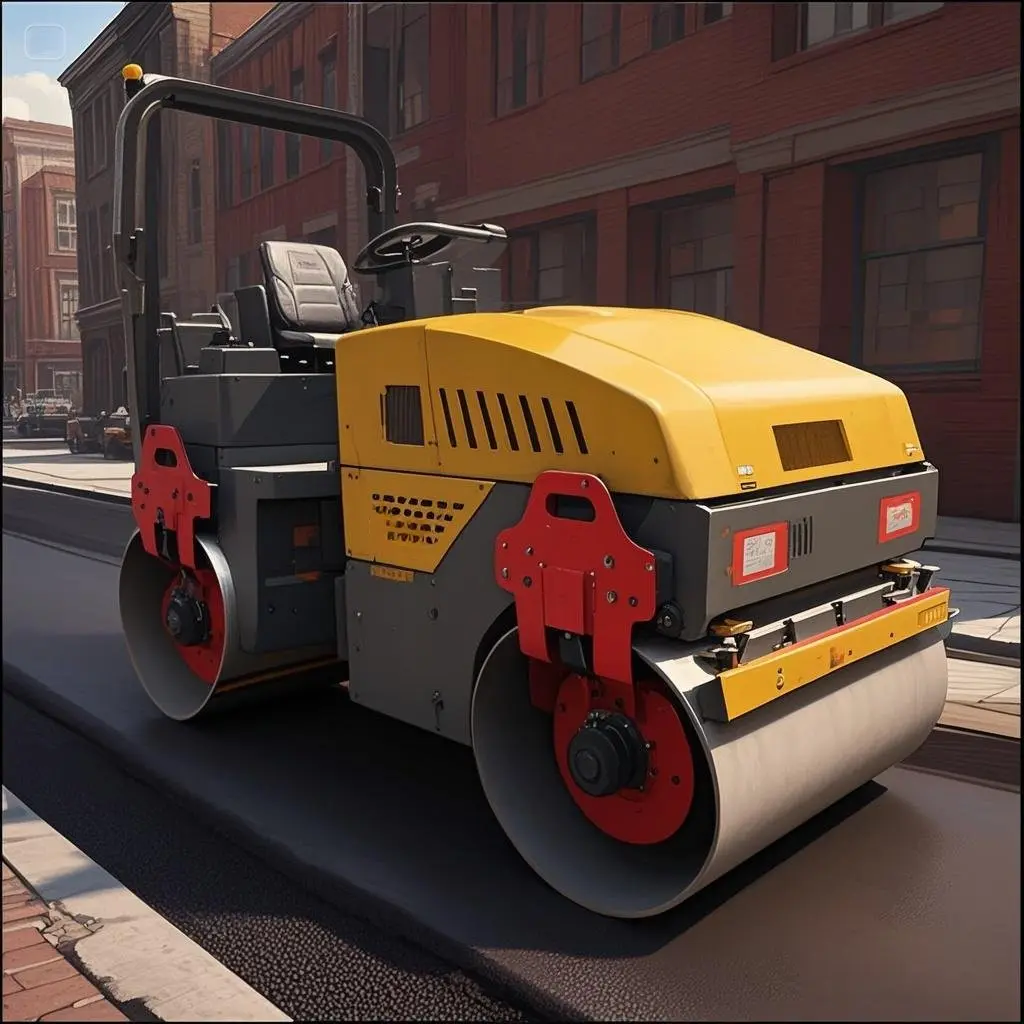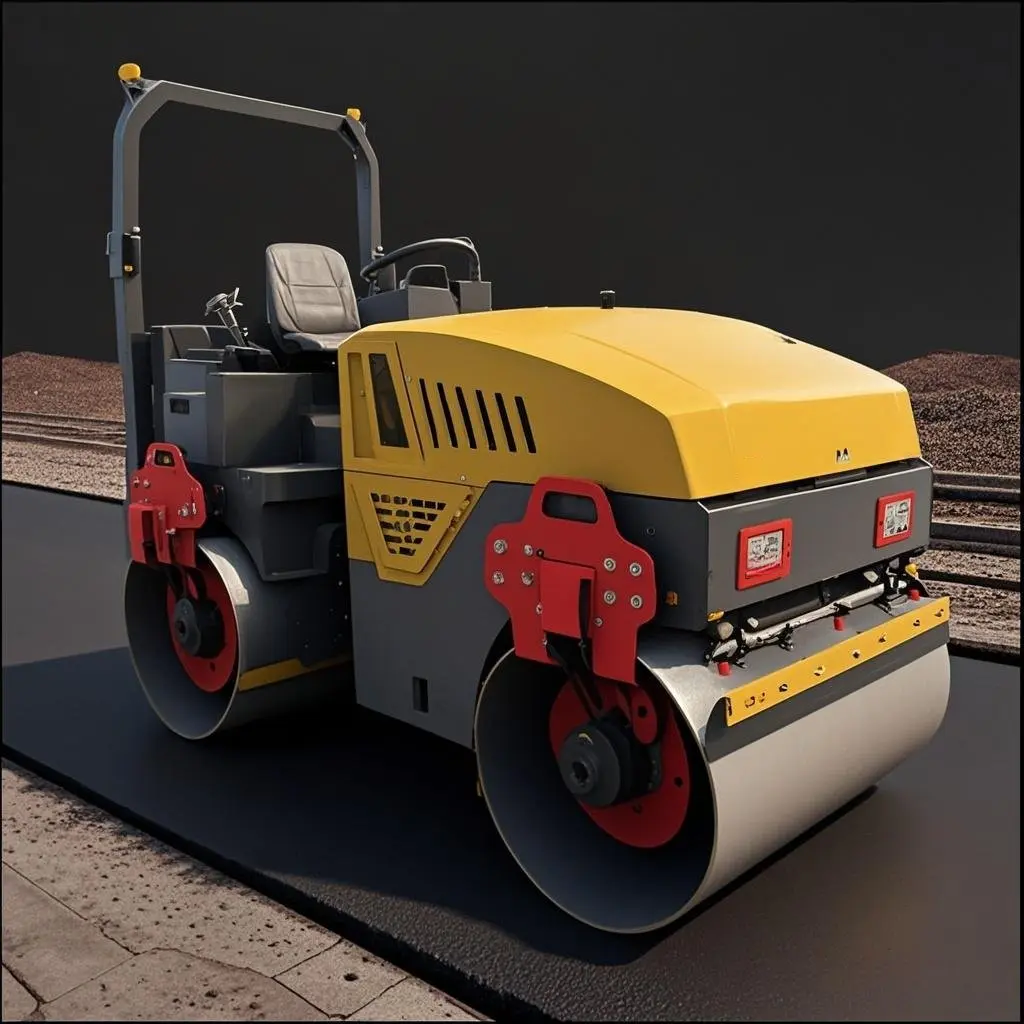The 4-ton front steel wheel and rear rubber wheel roller achieves a balance between compaction efficiency, material adaptability and economy through the synergistic effect of steel wheels and rubber wheels. It is particularly suitable for medium-sized road projects that need to take into account the compaction of both the base layer and the surface layer. It is an all-round equipment with outstanding cost-effectiveness.
4-ton Front Steel Wheel + Rear Rubber Wheel Combination Roller
A High-Efficiency Compactor Integrating the Strengths of Steel and Rubber Wheels
The 4-ton front steel wheel and rear rubber wheel roller combines the advantages of both high-pressure steel wheels and flexible rubber tires, making it suitable for a wide range of compaction scenarios—particularly effective for aluminum alloy flooring and composite surface construction.
Key Advantages:
1. Dual-Stage Compaction Process: Balancing Initial and Final Compaction
Steel Wheel (Initial Compaction):
The front steel wheel delivers high linear pressure, enabling rapid compaction of loose aggregates or thicker base layers. It effectively breaks up hardened subbase structures and ensures a strong initial compaction density.
Rubber Wheel (Final Compaction):
The rear rubber tires provide a kneading effect, which eliminates steel wheel marks, fills aggregate voids, and improves surface density and smoothness. This significantly reduces air voids and enhances water impermeability, especially on edge surfaces.
Seamless Operation:
The machine performs both initial and final compaction in one pass, minimizing equipment switching time and maximizing overall efficiency.
2. Adaptability to Complex Materials and Layered Structures
Layered Compaction Capabilities:
The front steel wheel is ideal for compacting hard materials such as crushed stone bases, cement-stabilized soil, or thick stone layers.
The rear rubber tires are suitable for sealing layers, clay, or fine aggregate mixtures in the final compaction stage.
Tailored for Composite Structures:
Perfect for multi-layered pavement systems (e.g., “base + asphalt surface” construction). The steel wheel handles base compaction while the rubber tire ensures uniform finishing of the surface layer.
Ideal for Recycled Aggregate Applications:
Rubber tires offer excellent resistance to aggregate crushing, making them well-suited for compacting recycled aggregate support layers.
Operating weight: 2600 kg
Total length: 2700 mm
Total width: 1500 mm
Total height (clear anti-collision beam): 1900 mm
Steering mode: hydraulic steering
Engine options (National II/National IV/EPA/Euro V): Changchai 390/Honda GX690/Behringer/Kubota D1105. (Other engines can be consulted separately)
One machine for multiple uses: a single device replaces the combination of “steel wheel + rubber wheel”, reducing rental or procurement costs and reducing the complexity of on-site equipment scheduling.
Controllable maintenance costs: steel wheels are easy to maintain (only regular cleaning and lubrication are required), and the cost of replacing rubber wheels is lower than replacing all rubber wheels.
Energy saving: 4 tons of power meets the needs of medium-sized projects, and fuel consumption is lower than that of large double steel wheel rollers.

Asphalt pavement construction: steel wheel initial compaction (fast compaction) + rubber wheel re-compaction (closed surface), especially suitable for urban main roads, parking lots and other scenes with high requirements for pavement quality.
Composite base construction: steel wheels compact the bottom hard material (such as water stabilization layer), and wheels compact the upper buffer material (such as aluminum alloy gravel seal).
Old road reconstruction: steel wheels handle complex base layers, and rubber wheels finally compact the new pavement layer to reduce disturbance to the original structure.
Special climate operations: steel wheels are used to quickly compact the ground in rainy seasons, and wheel hubs are used in low temperature environments to extend the effective compaction time of rubber.

A: Color
B : Different engines (Changchai,Loncin, B&S, Honda, Yamaha,).
C: Labels customization.
D: Logo customization.
E: Package customization.
F: Manual books customization.
G: Structure components customization.
A:Solid carton,steel frame with carton cover or wooden case
A: Usually the MOQ is 1set, but it will be adjusted accordingly if customers need OEM or ODM customization.
A: Sample will take 10days,mass production will need 25days.